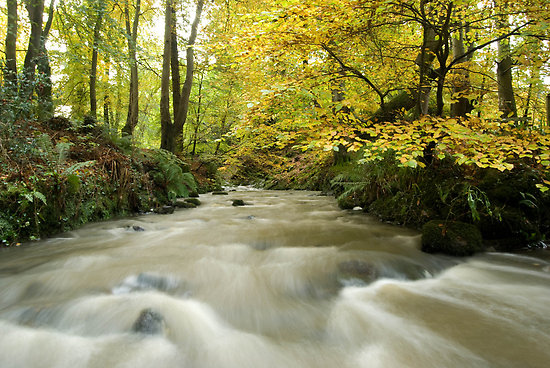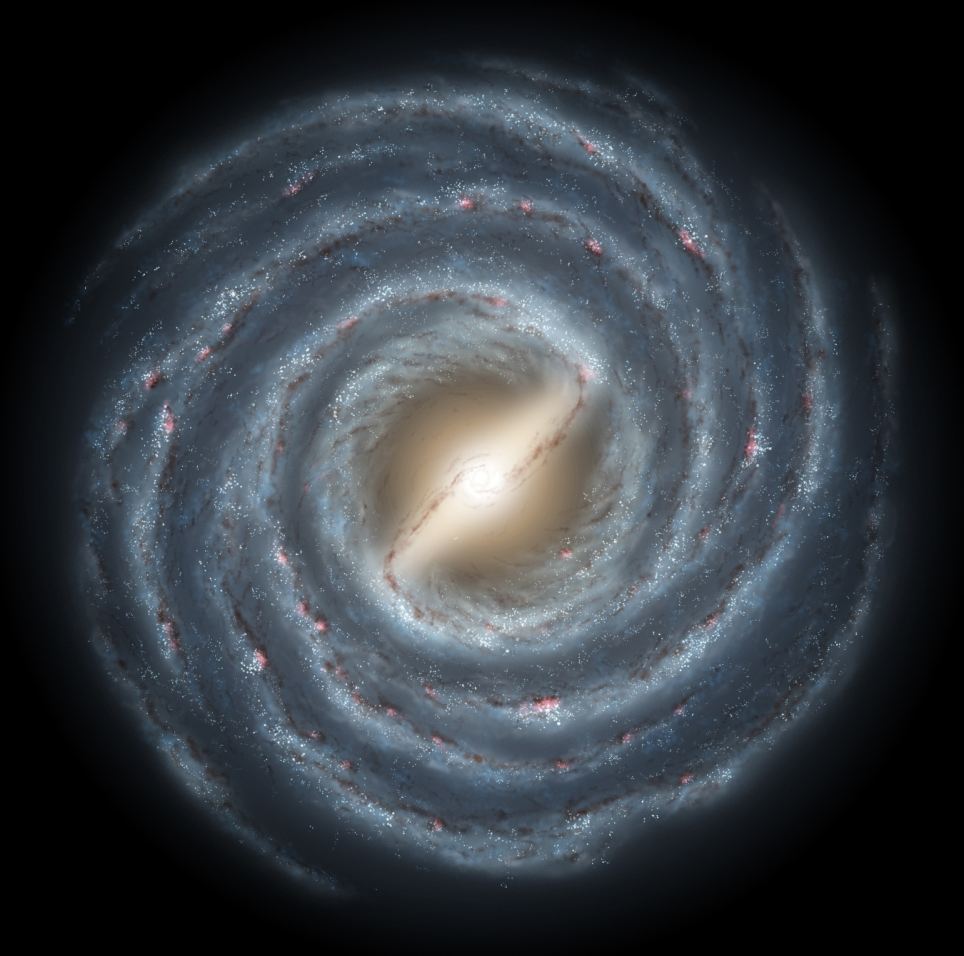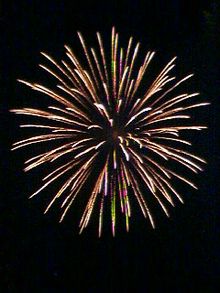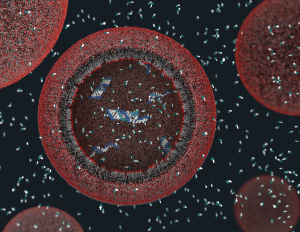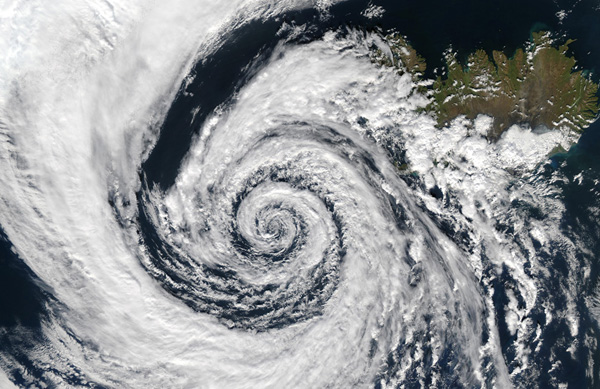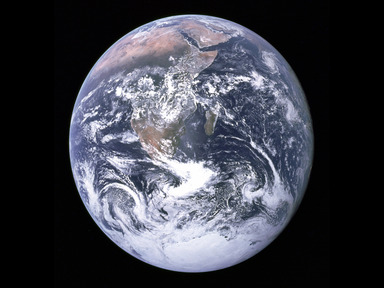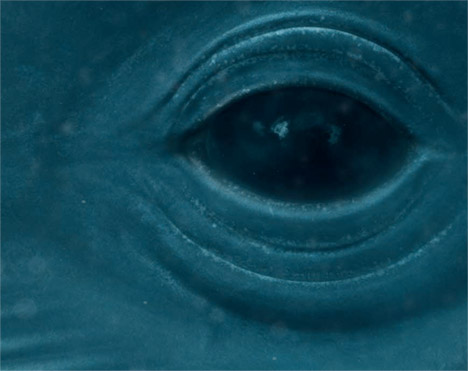What I Learned from Destroying the Universe
Happy New Year! Arkadian’s first blog of 2013 is a brief account of a recent, and surprisingly meaningful, personal experience of a natural system, and the important lessons learned.
Over the Christmas holidays, during a rainstorm, I took the dog for his usual walk in a local wood. En route there’s a place where I bridge a stream on a fallen tree trunk.
Halfway across, something caught my eye. Hovering above the swollen and fast-flowing water, was a perfect Giotto circle, white, saucer-sized. I got down on my belly for a closer look. It was an exquisite ‘universe’ of tiny bubbles, revolving clockwise peacefully, seemingly oblivious to the mayhem surrounding it (I didn’t have my cameraphone, so other ‘attractors’ this universe called to mind will have to be used instead for illustration. There is also a short video of a similar phenomenon at the end).
For 45 minutes I lay spellbound, trying to discern the dynamics underpinning its beautiful form and behaviour. Immediately, upstream a large rock, barely breaking the surface, split the current into three highly erratic patterns: a fast and a slow channel, and another that surged over the top in intermittent waves. These flowed either side of the universe and beneath it, respectively. Evidently, some eddy arising from their interaction was causing bubbles to organise as they did. But no matter how hard I studied, I couldn’t fathom how such chaos could have given birth to so elegant and serene an entity.
Eventually, my inner scientist could resist no longer. Reaching down, I put my little finger carefully onto the surface of the fast channel about a hand’s span from the edge of the universe. Pft! In a moment it disintegrated into a million bubbles, swept downstream on the torrent.
I waited a further 15 minutes, expecting the universe to reform. However, although random associations of bubbles coalesced from from time to time, none maintained location or integrity for more than a few seconds before being washed away.
The dog was palpably exasperated by this point, so we resumed our walk but returned for another look on the way home. Nothing. Most days since, I’ve passed this spot. Never have I seen the universe again.
So what three important lessons did I learn from destroying the universe?:
1. That no natural system is inevitable. Half of me still can’t accept that so robust a phenomenon could have been an accident. The little universe played a trick on my mind such that it seems inconceivable the specific environmental conditions in that area of the stream would never have given rise to it or will not again at some point in the future.
My other half, however, is now deeply humbled by a new certainty about uncertainty. The only reasonable conclusion it can draw from an honest review of the sporadic serendipitous coincidences by which a natural system, such as the universe, evolves from anarchic molecular storms, is that Fate and Destiny are tales told in hindsight. Nothing is meant to be. This half finds the thought oddly comforting.
2. That no natural system is independent of its wider environment. My intervention was based on a long and careful assessment of possible interrelationships between the universe’s behaviour and environment. I deemed the touch of my pinkie sufficiently gentle and distant from the core system to cause, at worst, a tiny perturbation that might afford some penetration of its workings.
But the universe depended on a context much wider and richer than I could have expected. Even within my narrow scope of observation, this singular micro-dance between pattern and (apparent) disorder defied any linguistic, mechanistic or mathematical generalisation.
That it also depended on the outlying point in the stream at which my finger interposed, however, drew my puny mind flailing into all the other dynamic factors vital to the universe’s becoming – the bubbles’ surface properties, the woodland shelter, the upstream topography, the rainfall intensity, the climatic pressure, and so on, inwards and outwards into a matrix of wholly interdependent and nested systems.
One can only quake in awe at the complexity, and in terror at the hubris of a culture that imagines it can reduce and conquer such prodigious abundance. The Modern Self thinks itself independent of its world and, thus, perceives the pieces of its world similarly: believing each can be treated in isolation. These are suicidal delusions it would do well to wake from.
3. That one shouldn’t be fooled by the apparent stability of a natural system. Although I never expected the universe to endure forever, its superficial calm, autonomy and resilience in relation to its riotous milieu communicated a permanence that would easily tolerate some interference. This was an illusion born from ignorance. The merest touch of my finger was all it took to disturb some hidden, fundamental control parameter, and initiate a total irreversible breakdown.
To summarise, it is my view that the universe was an impossibly fortuitous, complex, and mysterious accident (this includes my own ability to contemplate it). The illusion that I was separate from it, had mastery over it, and could assume its stability based on appearances alone was a recipe for disaster. The same assumptions likely hold for all natural systems, including the biosphere of the Earth.
What I learned from destroying the universe is that the wisest approach for humankind is to cultivate a new personal humility and responsibility towards the natural systems we experience every day: to intervene in their unique, context-specific lives with mindfulness and empathy, and to seek a partnership that follows their lead in all things. We have so much to learn.
We hope you’ll join us in a fortnight for our first major series for 2013: a model for seeding a nationwide viable alternative to the current economic system (co-created by a team of PhD candidates focusing on sustainable development).
*Since writing this blog, Arkadian came across a similar phenomenon in another stream, and this time took a video (see below). Whilst the current and context is radically more sedate, the behaviour is in many ways very similar to the instance described above and offers a good illustration.
Leave a comment
Recent Posts
- Seeding a Viable Economic Alternative. Pt 3: Placing Mother Nature First
- Seeding a Viable Economic Alternative. Pt 4: Ego-as-Process
- Charlie Hebdo and the Immorality Loop
- My Top 20 Waterfalls Pt3 (S America: #2-1)
- My Top 20 Waterfalls Pt2 (S America: #7-3)
- My Top 20 Waterfalls Pt1 (Africa, Asia, Europe & N America)
- Positive Change using Biological Principles, Pt 4: Principles in Action
- Positive Change using Biological Principles Pt 3: Freedom from the Community Principle
- Positive Change using Biological Principles Pt 2: The missing Community Principle
- Positive Change using Biological Principles, Pt 1: The Campaign Complex
- Seeding a Viable Economic Alternative. Pt 2: The Principal Themes (Outcomes of a Systems Workshop at Future Connections 2012)
- Seeding a Viable Economic Alternative. Pt 1: The Action Plan (Outcomes of a Systems Workshop at Future Connections 2012)
- What I Learned from Destroying the Universe
- Why Corporate Regulation is a Socioenvironmental Necessity. Part 5 of 5: How do We Create a Diverse and Stable Economic System?
- The Root of all Evil: how the UK Banking System is ruining everything and how easily we can fix it.
- What is Occupy? Collective insights from a ‘Whole Systems’ Session with Occupy followers
- Why Corporate Regulation is a Socioenvironmental Necessity. Part 4 of 5: Why does the current Economic System tend towards Uniformity and Instability?
- Why Corporate Regulation is a Socioenvironmental Necessity. Part 3 of 5: Why does A Diverse System = A Stable System?
- Why Corporate Regulation is a Socioenvironmental Necessity. Part 2 of 5: Why does (did) Civilisation tend towards Diversity and Stability?
- Why Corporate Regulation is a Socioenvironmental Necessity. Part 1 of 5: Why do Ecosystems tend towards Diversity and Stability?





